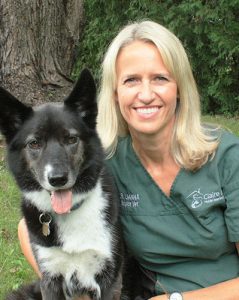
Written by Dr. Lianna
As a hospice care veterinarian, I am often asked if other pets should be present during the time of home euthanasia. Clients worry that their other pets will be traumatized, or disturb the pet in their final moments.
It can be difficult to know for sure what is in the hearts and minds of animals, but I can tell you what I have witnessed and experienced over the years at hundreds of home euthanasia appointments.
The answer is yes.
Other pets should be present during the euthanasia appointment. They are part of the family and the pet is used to having them around, after all. They may be very closely bonded and be a source of comfort to the pet and to the family.
There will always be exceptions, of course, when it is not a good idea to have other pets present. There will be cases when family pets don’t get along at all and need to be separated due to aggression. Some very young animals (such as rambunctious puppies) seem fairly oblivious to death and act as an annoyance, rather than a comfort, to the dying pet. But generally the other pet is quite respectful of the process and keeps their distance when appropriate, or will cuddle close when needed.
At the very least, I always recommend that the other pet come to see their deceased companion at the end. They don’t appear traumatized. Some pets will sniff the air and avoid the deceased, others will spend a few moments sniffing the body and then walk away, and a few will curl up right next to them.
Do pets grieve the loss? That remains a mystery, what is really in their thoughts. While animals don’t have the complex thought to grieve the way we do, they certainly recognize a change in their home environment, and they don’t like change. Even if they did not get along with the other pet, they may still seem “out of sorts” following the death, especially if they were not given the opportunity to say good bye, in their own way. Many of my clients have told me that the pets not present for the euthanasia appear confused and unhappy, spend time looking for their companion, or waiting by the door for them to come home. This can be heart-breaking, to say the least. When given the opportunity to see the pet after death, they seem to have some level of understanding, and move on fairly quickly.
While I will always encourage other pets to be present during home euthanasia, the decision remains with the client, who ultimately knows their pets, and their needs, best. In order to help the other pets following the loss, it’s best to keep their routine as normal and stable as possible and make sure they are given consistent attention and affection every day. This will be good for both the pet and the owner, as they cope with moving forward after this very significant loss.

